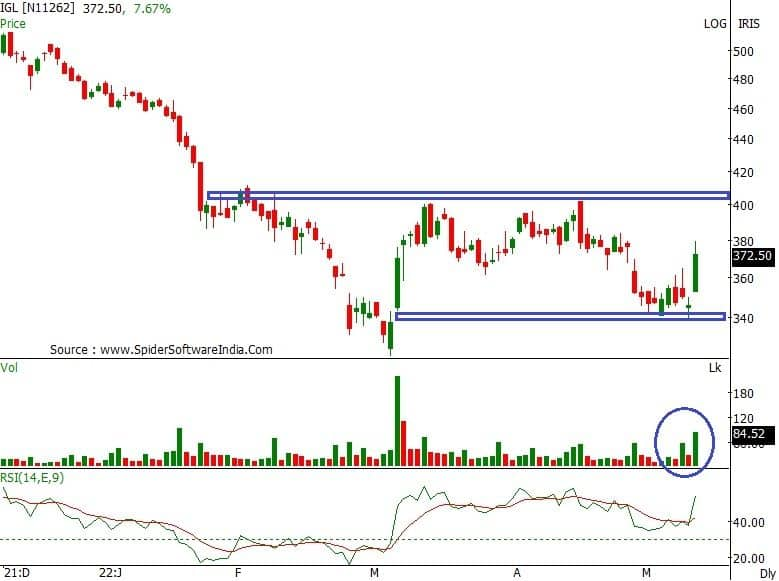
Historical data of prices suggest that equity market consolidates for more time than it is trends. If we can take Nifty as an indicator of market, the movement in Nifty also suggest the same kind of movements. When we say consolidation what we mean is the movement of Nifty to remain in a range of 500-1000 points.
Trading in such range can be a bit frustrating because as soon as we detect that market is going up, we hit the upper end of the range and the market start coming down. However, in such situations one strategy that helps is Iron Butterfly.
We will see the definition of this strategy along with how to construct, when to initiate and when to exit.
Iron Butterfly is a strategy designed to trade range-bound or consolidation outlook. In simple words it is Selling of both options Call & Put of strike near the current market price with Hedges.
We will understand this Hedge during construction of the strategy. For definition purpose we can say that Iron Butterfly is a strategy that benefits from the Underlying not moving a lot from the current levels.
Construction:
1 Strategy with 4 Trades
1. Sell Call (Strike = Closest to Current Market Price)
2. Sell Put (Strike = Closest to Current Market Price same as Call)
3. Buy Call (Strike = Higher than Current Market Price, Call Hedge)
4. Buy Put (Strike = Lower than Current Market Price, Put Hedge)
Why do we sell Call & Put with Strike Closest to Current Market Price?
Strikes closest to current market will always have maximum premium available for us to gain if the underlying does not move.
Why Buy the Hedge?
Higher Strike Call and Lower Strike Put are bought as Hedge to safeguard against Sold Call and Sold Put. If the underlying gives a big move in any direction our sold Put or Call can have a lot more loss than the Premium received. This way the Losses will be controlled.
Now, if there is a big move the Loss in Sold Call or Put will be set off by Profit in Bought Call or Put after the underlying crosses the Bought Strike.
Which Strikes Call and Put to Buy?
To Buy the higher Call and Lower Put, I have been following simple math. We add the premium collected by Selling Call and Put. Add it to the Sold Strike to arrive at the Higher Call Strike and subtract from the Sold strike to arrive at the Lower Put Strike.
Following example will explain this clearer.
Underlying Trading at 1005
Sell 1000 Call @ 27.5
Sell 1000 Put @ 22.5
Buy 1050 Call @ 9 (1000 +27.5 + 22.5)
Buy 950 Put @ 6 (1000 – 27.5 – 22.5)
Let us understand the P/L calculation:
This is a limited loss strategy. Calculation of Maximum Profit & Maximum Loss is also easy and is as follows:
Maximum Profit = Net Premium Received (achieved if underlying expires exactly at sold strike)
Our example, Max Profit = 27.5 + 22.5 – 9 – 6 = 35 (Happens with Expiry @ 1000)
Maximum Loss = Difference between Sold and Bought Strikes – Maximum Profit
Our Example Max Loss = 50 (1050 – 1000 or 1000 -950) – 35 = 15
Maximum loss scenario happens when underlying expires either above the higher Call strike (1050) or below lower Put strike (950).
Now that the strategy definition is complete let us quickly look at when to enter and when to exit.
Well, I have been using this strategy on Nifty when VIX is low. Same practice can be followed. If India VIX is below 15, it indicates that the index is not expected to give a very big move.
When to initiate?
I have been trading in Weekly expiry with Nifty, so one may initiate any time on the first day of the current expiry that is Friday if the previous weekly expiry ended on Thursday.
When to Exit?
I generally do not exit during the expiry but if Nifty crosses any of the Buy strike and if you feel the trend may continue one may exit. In such case the Loss would be lower than the Maximum Loss we calculated.
Example: if the underlying crosses 1050 and if I feel it may go up to 1100 by expiry, I will rather exit during the expiry at a loss lower than maximum loss.
Most Important Note:
This is a strategy that one needs to do systematically for every expiry of the consolidation. Consistency in execution and discipline in entry and exit is essential for the Iron Butterfly system to work.
Disclaimer: The views and investment tips expressed by investment experts on Moneycontrol.com are their own and not those of the website or its management. Moneycontrol.com advises users to check with certified experts before taking any investment decisions.


